COVID-19 SPECIAL: One hundred years of pandemics
Three times that the world coughed, and Singapore caught the bug
Be it 'Spanish', 'Asian' or 'Hong Kong', deadly flu pandemics have taken their toll here - with the first hitting hard migrant workers from India. Sounds familiar? Insight looks back to learn more.
Sign up now: Get ST's newsletters delivered to your inbox
Olivia Ho , Olivia Ho
Follow topic:
Infection spreading rapidly among migrant workers. Accusations of a cover-up. Wave after wave of infections, with the number of cases hitting new peaks each day.
This might sound like Covid-19, but it happened here just over a century ago, in 1918, when the world was left reeling from a virus dubbed "the Spanish flu".
The coronavirus of today is not the first pandemic to reach Singapore's shores, nor the deadliest - so far, that is.
Most Singaporeans will remember the 2003 Sars (severe acute respiratory syndrome) epidemic that killed 33 here, or the 2009 H1N1 virus that infected 415,000 in the Republic over the course of nine months.
Less well remembered are the three great influenza pandemics of the 20th century. There is the 1957 "Asian flu", which killed between 1.1 million and two million around the world, and the 1968 "Hong Kong flu", which had one million fatalities.
First of all, though, came the 1918 Spanish flu, often dubbed "the mother of all pandemics". It infected some 500 million people - a third of the world's population at the time - and its death toll has been estimated conservatively at 40 million, but could have been as high as 100 million.
All three swept through Singapore in their turn.
Adjunct Associate Professor Vernon Lee of the National University of Singapore's Saw Swee Hock School of Public Health (SSHSPH), tells Insight: "The definition of a pandemic is a global spread of a sudden disease, and the feature of pandemics in general is that a vast proportion of the population is susceptible to the disease because there's no prior immunity.
"Every time we go through a pandemic, we always try to learn from these previous episodes to see what are the best practices that we can incorporate. For example, we know from experience that a good surveillance detection system is very important. To be able to even deal with the disease, you must be able to know where the disease is.
"It is also important to put out information for the public so that they can be educated on what to do, and also to empower them to take actions into their own hands."
Associate Professor Hsu Li Yang, who leads SSHSPH's infectious diseases programme, notes: "There are broad parallels that can be drawn between these pandemics, largely because human behaviour has not changed much over the past century even though socio-political circumstances as well as technological and medical capabilities have changed greatly."
All the pandemics resulted from large movements of people, which have accelerated dramatically over the last two decades, and have all caused excessive death and suffering, in part because healthcare systems have been overwhelmed each time.
Physical distancing has proved the most common intervention to slow the spread of each pandemic, from school shutdowns - which occurred in Singapore in both 1918 and 1957 - to border closures.
Though it is helpful to learn from past pandemics, Prof Hsu cautions that comparisons between Covid-19 and earlier outbreaks are "largely superficial analogies that should not dictate policies and interventions at this present time".
However, he adds: "Post-pandemic - because the pandemic will end - it is important to relearn again that public health and pandemic preparedness should always be adequately funded, and that global cooperation for future outbreaks is an ideal that we should strive harder to reach."
1918: 'Dying like flies'
In June 1918, the first stirrings of a "mysterious epidemic" were heard in Singapore. It was said to have come out of Spain. News reports attributed it to "the irregularity of the weather". Locals called it a "foul wind" caused by evil spirits.
So began the 1918 influenza pandemic, an epidemiological event so devastating that it should merit equal attention to that given to the event it directly followed - World War I.
"Yet, compared to the literature generated by the Great War, the pandemic, which spared neither president nor peasant, was until recently a largely marginal subject," writes cultural studies researcher Liew Kai Khiun in Terribly Severe Though Mercifully Short, his 2007 paper on the flu in British Malaya.
The pandemic struck Malaya in two waves. The first, milder wave appeared in June and July 1918, followed by a second, deadlier wave in October and November. The area was spared a third wave, which occurred in temperate countries in early 1919.
It is hard to calculate how many people died of the virus in Singapore. The 844 influenza deaths recorded that year are thought to be a poor estimate. Deaths during the first wave were initially misattributed to malaria.
A 2007 paper, Influenza Pandemics In Singapore, A Tropical, Globally Connected City, written by Prof Lee and six other experts, estimates that based on excess mortality rates, influenza claimed at least 2,870 lives in Singapore in 1918.
A 1919 retrospective in The Malaya Tribune describes how, in some districts of Malaya, people were "dying like flies in their homes, the hospitals, and not a few on the roadsides". One could be well in the morning and dead by evening.
Clinics were swamped. Healthcare workers were at high risk. Singapore General Hospital was handicapped when 12 of its 19 nurses fell ill concurrently.
Unlike Covid-19, to which the elderly and those with pre-existing medical conditions are most vulnerable, mortality for the 1918 flu was especially high for young adults and small children.
Nevertheless, there are echoes that can be found in the current pandemic.
Dr Liew points out that as early as July 1918, a concerned reader wrote to The Straits Times about an outbreak of cerebromeningitis fever in the United States, accusing the local authorities of trying to keep the matter secret.
In the present, China has been criticised by observers for concealing the extent of the initial coronavirus outbreak in Wuhan. It has lashed out in turn at the US, suggesting it was the American army that brought the virus to Wuhan.
But what the pandemics of 1918 and today share, at least in a Singapore or Malayan context, are their outsize impact on the migrant worker population.
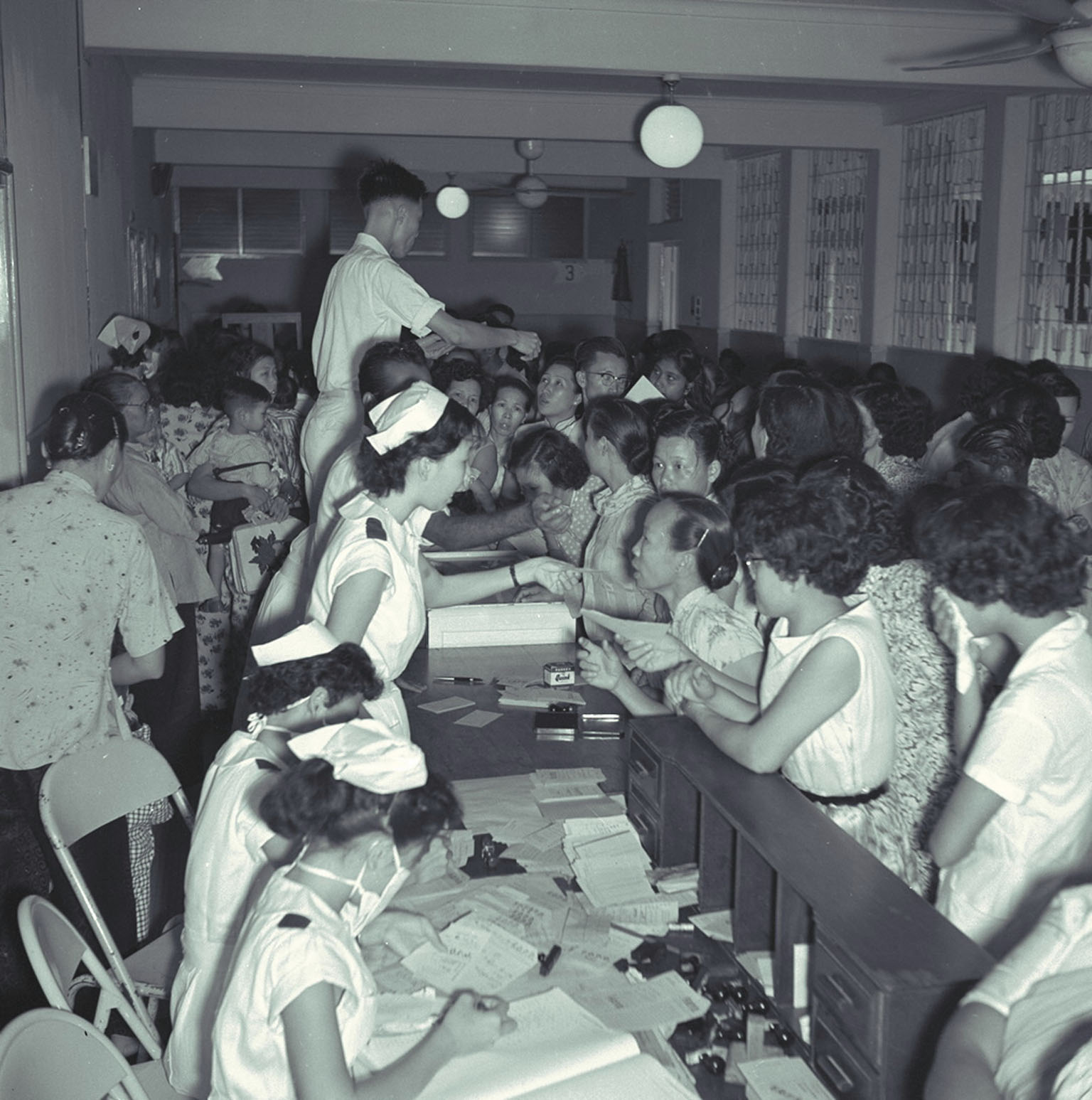
"The core similarity is the most bacteriologically vulnerable segments are also those who are most socially and economically marginalised," Dr Liew tells Insight. "In both cases, we have the similar accounts of overcrowded living environment, poor health conditions arising from transient and socially isolated communities."
In 1918, all local groups were hard hit, but migrant labourers from India suffered disproportionately, with the Tamil immigrant population of Negeri Sembilan registering more than a twofold increase in mortality rates.
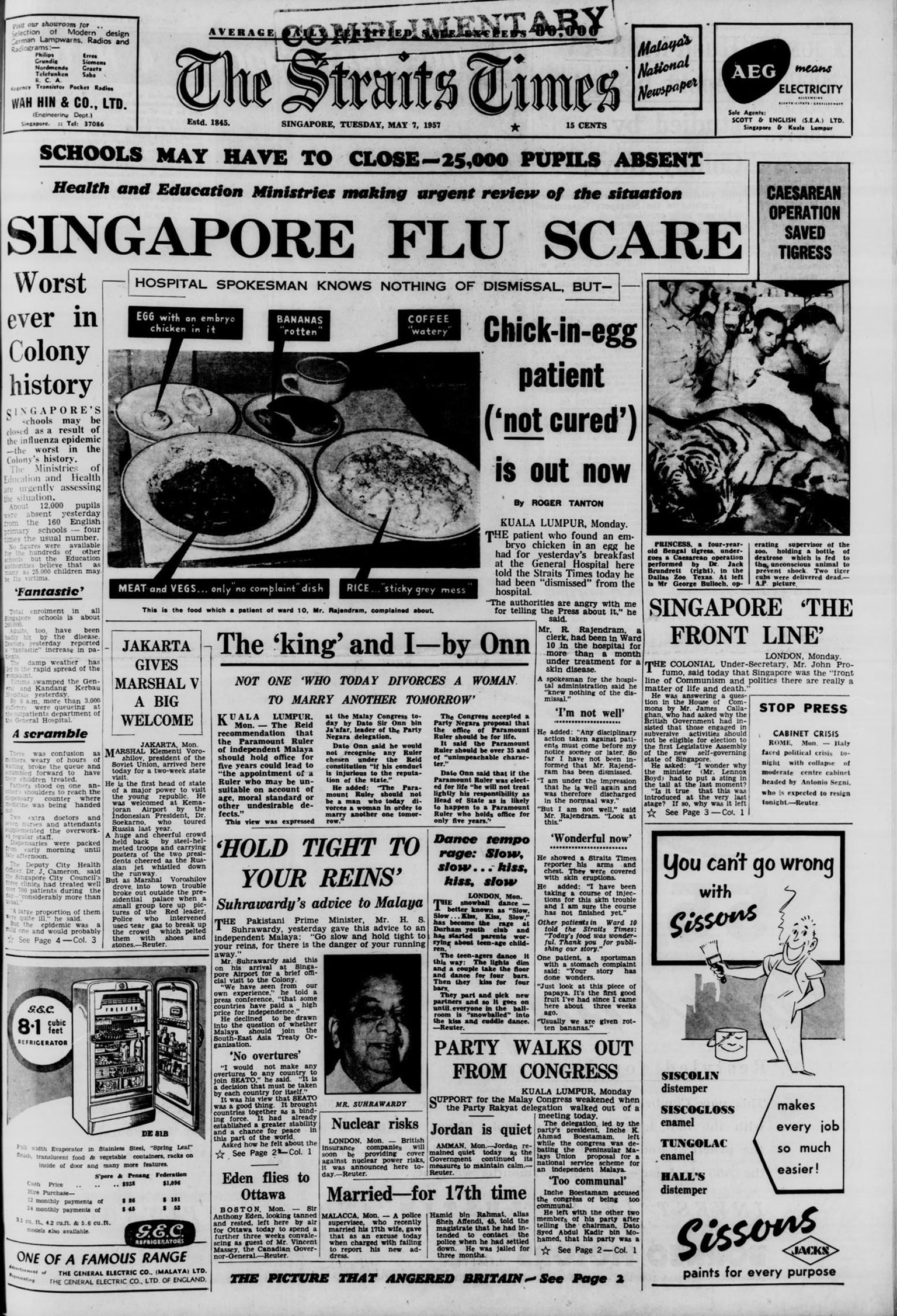
Of the 5,992 Covid-19 cases in Singapore, more than 4,000 have been linked to clusters at foreign worker dormitories. A single dormitory, S11, accounts for more than a fifth of the cases in the whole country.
In his paper, Dr Liew quotes a rare first-hand account from a Tamil miner who contracted the 1918 flu, and which was translated by The Times Of Malaya.
The victim recalled being taken by the police to a place with a "hundred of others as bad as ourselves". He was given some brandy and had hallucinations about his native land. Upon awakening, he realised that he was "in the room of the dead, awaiting burial, the clerk thought that I was dead and had taken me to the mortuary".
Though the plague brought to light the unsanitary, overcrowded conditions that these workers lived in, it also led to the unfortunate racialising of the disease, with both scientific experts and media opinions alike concluding that some races were simply more susceptible to the virus than others - thus shifting the blame to those most afflicted.
Dr Liew writes that in 1918, such migrant workers were "seen to be subservient and a cheap source of labour supply, yet constantly enfeebled and diseased, creating a series of health and labour problems for the plantations and agricultural estates.
"Such, in turn, required the paternalism of the colonial government and estate managers in ensuring that they are properly taken care of."
Today's Covid-19 fight could open up opportunities for reform. National Development Minister Lawrence Wong has repeatedly stressed that the risk of infection in the population is the same, regardless of nationality or race.
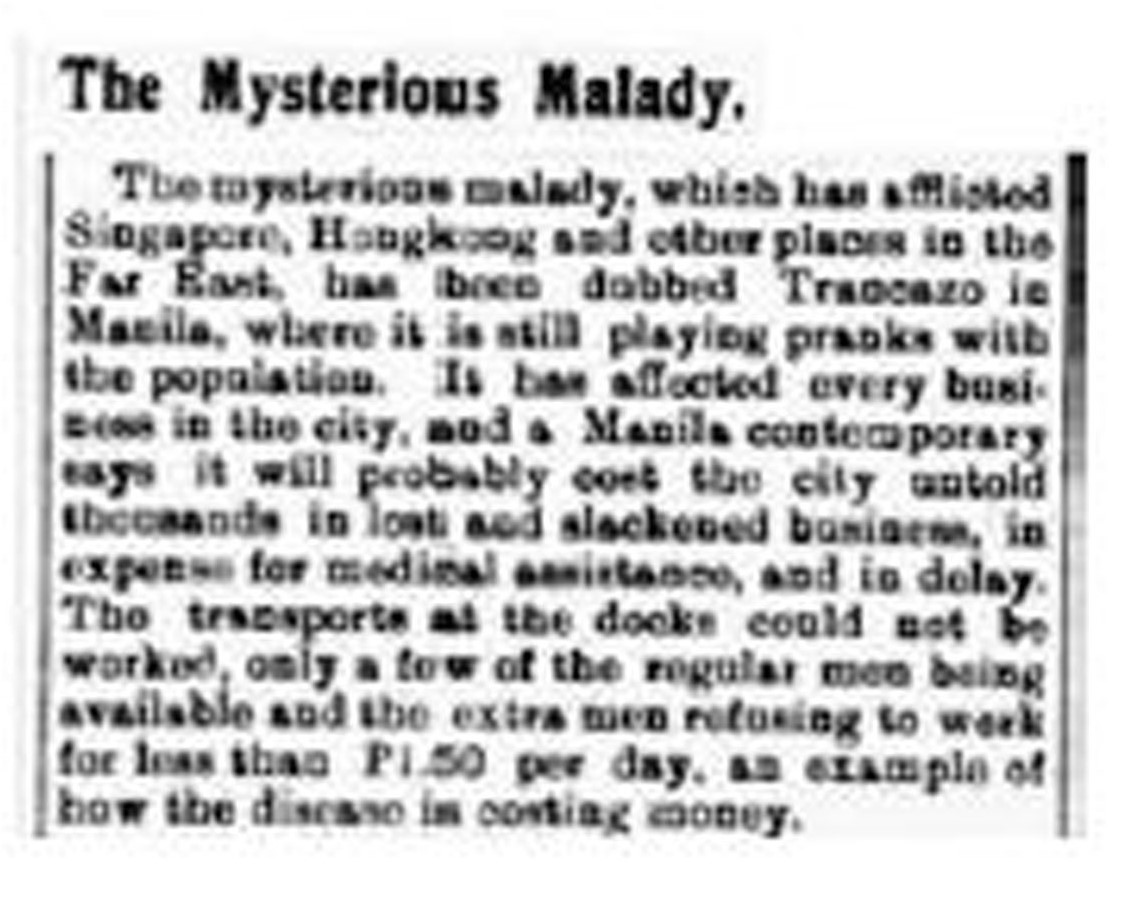
Meanwhile, Manpower Minister Josephine Teo has acknowledged that standards need to be raised for foreign worker dormitories and promised to make it happen once the immediate crisis has been overcome.
Dr Liew says: "Even as there is no end in sight to Covid-19, discussions and works are already under way to reimagine the economies and societies of the post-pandemic future.
"Having a historical perspective in this respect allows us to see pandemics not just as angels of death, but also as agents of change."
1957: Let it burn out
The Asian flu of 1957 and 1958 was also known as "the Singapore virus", although for a more salutary reason: It was first isolated here by University of Malaya professor Lim Kok Ann (see other story).
The virus, thought to have originated in Guizhou, China, and which spread through Hong Kong, reached Singapore in late April 1957 and infected 30 marine workers living in a kampung on the offshore settlement of Pulau Brani.
It peaked in mid-May and burned out in slightly over a month, causing an estimated 680 deaths in Singapore, according to Prof Lee's paper.
Singapore University of Technology and Design assistant professor of anthropology Lyle Fearnley notes the 1957 flu was the first pandemic tracked around the world by the World Health Organisation (WHO), which had established a network of surveillance laboratories known as the World Influenza Programme. Singapore would prove to be a crucial "epidemic intelligence" point in this network.
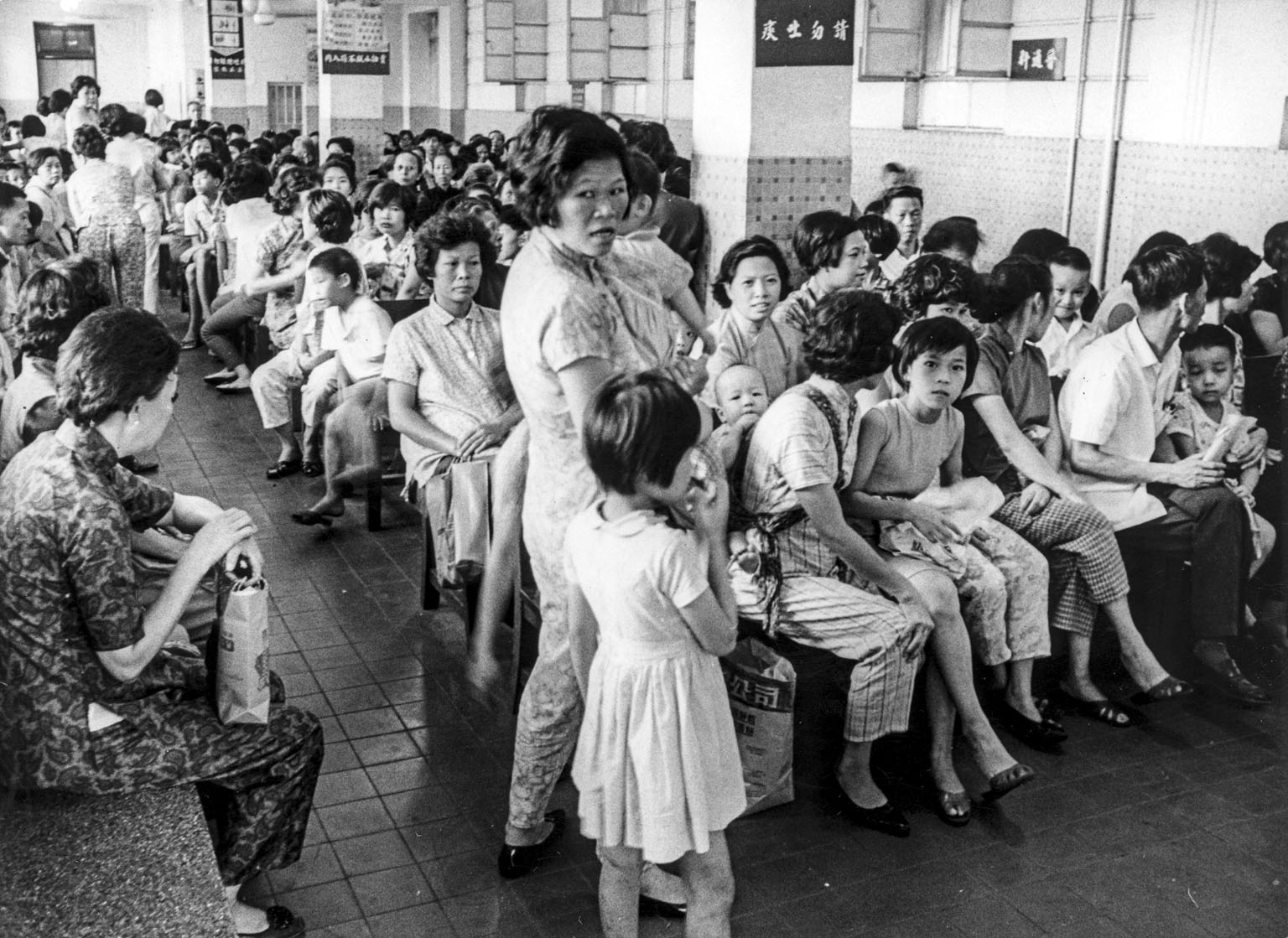
The programme's aim was to detect new strains of influenza rapidly enough to develop a preventative vaccine for international use.
Prof Fearnley, whose pandemic book Virulent Zones comes out this year, says this did not in practice succeed in protecting a significant portion of the world population in 1957, nor has it in any subsequent pandemics.
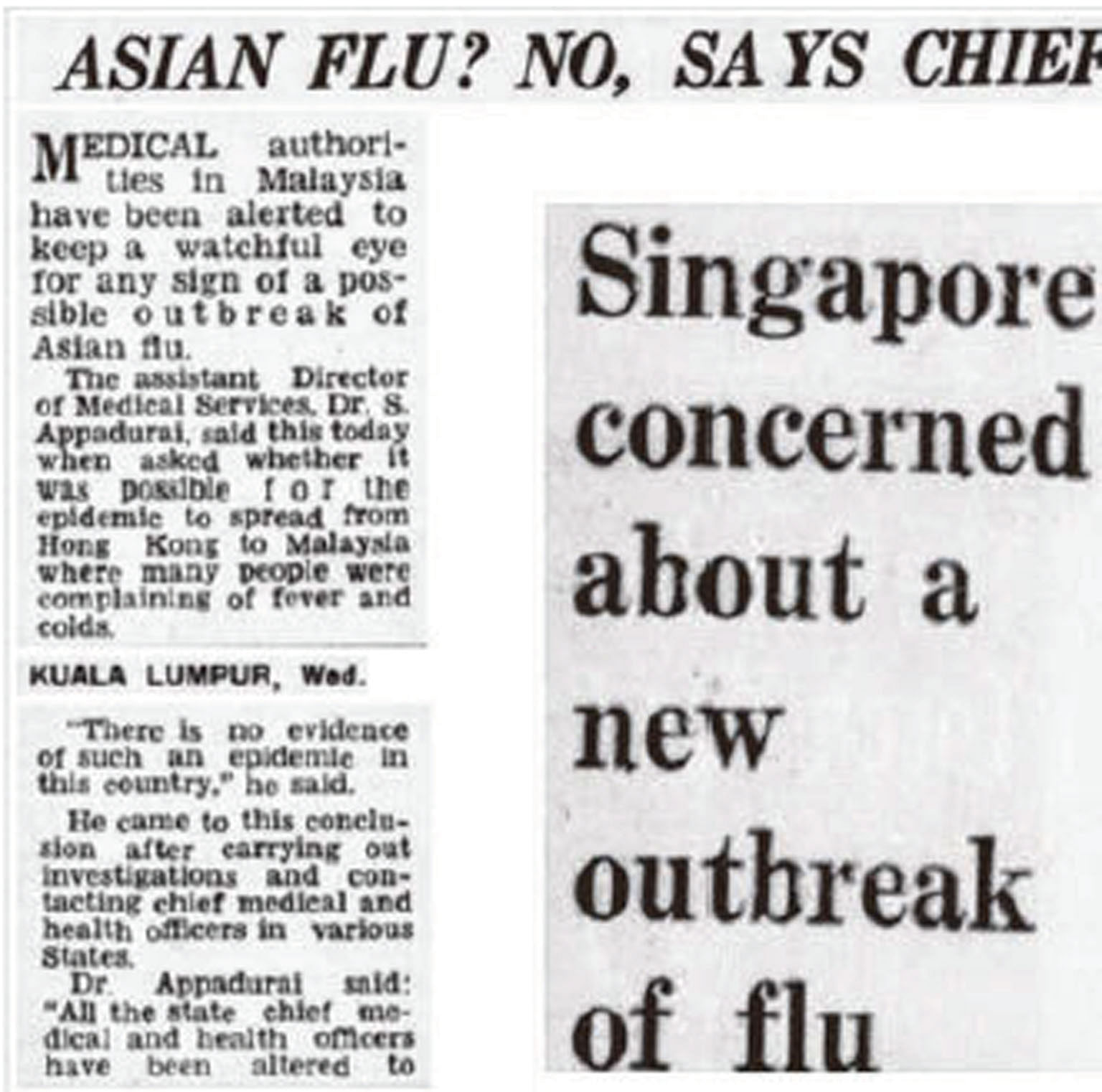
"Still today, the manufacture, testing and distribution of vaccines take a significant amount of time, meaning that there remains a large gap between our ability to rapidly detect and track emerging pandemics, and our ability to prevent them with vaccines."
Historian Loh Kah Seng describes the pandemic response of Singapore's Labour Front government, led by Chief Minister Lim Yew Hock, as "minimal".
Dr M. Doraisingham, then permanent secretary of the Ministry of Health, even suggested just letting it burn out. "We can do nothing about it," he said, adding that he did not want to advise people to wear sterilised masks, as that might give them false hopes.
Though the WHO said it had warned South-east Asian countries about the possible spread of the virus from Japan several months earlier, it took the Singapore Government until May 3 to advise people to stay away from crowded places.
Schools closed on May 8, by which point 45,000 pupils were already down with the flu.
"This does not necessarily point to a weak government," says Dr Loh. "The same government had instituted - or would do so within a year - many of the important pillars of the tuberculosis control programme. Its response was likely due to the peculiar characteristics of the flu pandemic."
A May 7 ST report describes a queue of more than 3,000 at the outpatients department of Singapore General Hospital, with desperate mothers cutting the queue to get their children treated and fathers standing "on one another's shoulders" to grab medicine from the dispensary.
Many patients were too weak or destitute to seek treatment, says Dr Loh; sometimes whole families would lie side by side praying for the infection to disappear. Free clinics for the poor opened, thanks to community relief and voluntary medical efforts.
1968: 'No flu epidemic in Singapore'
Of the three pandemics, the 1968 Hong Kong flu was the mildest, lasting a few weeks in August. Unlike the other two, it resulted in no school closures - the Government considered it, but decided so many people had already been infected that there was no point - and no substantial health and safety measures were adopted.
On Aug 9, then director of medical services Ho Guan Lim told ST that there was "no flu epidemic in Singapore", though five days later, the paper reported large numbers of patients with flu-like symptoms descending upon clinics.
Prof Lee's paper estimates that more than 540 people died from this outbreak, which was declared over by Sept 7.
Says Prof Lee: "In medical science, in public health, we try to look for evidence. Every pandemic is actually an opportunity to learn more and gain more evidence. Of course, we don't wish for it to happen, but when it does, we really need to take the opportunity to learn from it."

